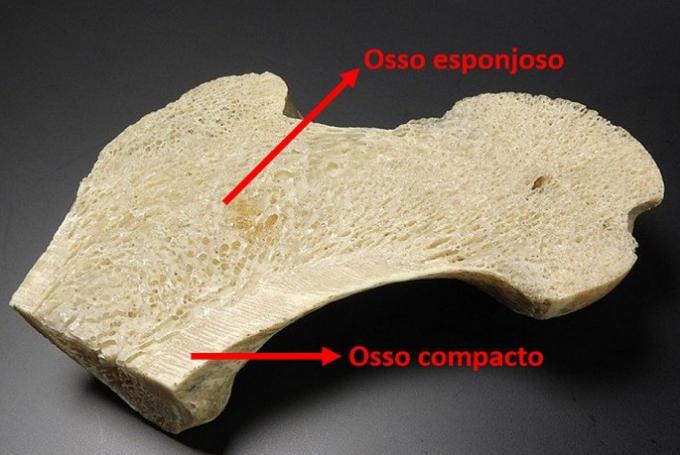An arts topic that is often asked for in entrance exams and competitions is rock art.
Therefore, we bring 7 new questions created by us and 2 from competitions for you to test your knowledge.
Question 1
The oldest artistic manifestations date back to the Paleolithic Period (also known as the Chipped Stone Age). We can cite as one of the first techniques and styles of rock art developed by humans:
A) Hands in negative, as in Cueva de las manos.
B) Polychromatic paintings, as in the Altamira Cave.
C) Pictographic writing, such as that found in the Mesopotamian city Kish.
D) Simple and geometric style.
The correct answer is A.
The negative hands were a type of painting made with a colored powder that was blown onto the hands resting on the walls and deposited on the stones, thus forming the image of negative hands.
Question 2
Regarding prehistoric art, we can say:
A) The artistic manifestations found are limited to cave paintings, which mainly represented gods and the connection with the spiritual world.
B) They began when human beings settled in one place, abandoning nomadism and being able to dedicate themselves to art.
C) In the Upper Paleolithic, both in painting and sculpture, the female figure was predominant, highlighting features such as breasts and belly, symbolizing fertility.
D) Since the beginning, the art produced portrayed mostly male figures, highlighting virility and physical strength.
The correct answer is option C.
In a large part of the first human societies, women were valued and aspects of the feminine such as fertility were worshiped (matriarchal societies). Thus, female figures were common in art, as an example we have the Venus of Willendorf figurine, found in Austria.
Question 3
The motivations and intentions that led prehistoric human beings to manifest themselves artistically are not completely clear to contemporary scholars. However, there is an assumption that:
A) The images and artifacts created had an exclusively decorative objective, made to beautify the environment in which they lived.
B) The works were made by artists known in those societies, being a way of personal and individual recognition.
C) They were performed in most caves and by anyone, constituting an elaborate form of entertainment.
D) The most remote manifestations were made with the belief that the image and the real world were the same thing. Thus, painted animals were a way of “capturing” game before the hunt.
The correct answer is D.
Human thinking in prehistory was completely different from what we have today. Thus, the images produced in the caves had practical and extremely important motivations for survival, highlighting above all the “power of images”.
Question 4
We can cite as an important archaeological site in Brazil:
A) Serra da Capivara National Park, in Piauí
B) Grota Funda Park, in São Paulo
C) Altamira Cave, in Pará
D) Petar cave complex, in São Paulo
The correct answer is option A.
Serra da Capivara National Park was founded in 1979 to preserve archaeological finds from prehistoric civilizations. It was included on the World Heritage List in 1991 and is one of the most important parks that preserve rock art in Latin America.
Question 5
Human beings have developed various artistic manifestations since ancient times. It is known as “rock art”:
A) All types of art produced by “cavemen”, from painting to sculpture and other artifacts.
B) Only paintings found inside caves and made using pigments.
C) Paintings made on walls with pigments and engravings on walls and stones made with fissures in the rocks.
D) Art made only by Paleolithic people.
The correct answer is C.
Rock art is that made on rocks, both paintings and engravings.
Question 6
(Enem - 2017) Cave painting, which is a Brazilian cultural heritage, expresses:
A) the conflict between indigenous peoples and Europeans during the colonization process in Brazil.
B) the social and political organization of an indigenous people and the hierarchy among its members.
C) aspects of the daily life of groups that lived during the so-called prehistory of Brazil.
D) rituals involving sacrifices of large, currently extinct dinosaurs.
E) the constant war between different Paleoindian groups in America during the colonial period.
The correct answer is C.
Rock art was developed by human beings who lived in prehistory, that is, before the emergence of writing.
Question 7
Regarding artistic manifestations (in addition to rock art) that date back to the Neolithic period, we can say:
A) This is a phase in which human beings begin to move more around territories in search of food, thus, the art of the period expresses this dynamic and restless character.
B) There are no innovations or changes in the type of art produced in the Neolithic and Paleolithic periods, always being simplified and primitive manifestations.
C) During this period, the drawings inside the caves became more elaborate, full of layers, colors and concern with the faithful representation of the elements.
D) Some objects such as ceramics now have functions that go beyond utilitarianism, also revealing a concern with aesthetics.
The correct answer is D.
In the Neolithic period, when societies abandoned nomadism and settled on the land, other needs and intentions in art began to emerge. Slowly, appreciation for what they considered beautiful emerged. It is the beginning of “decorative” thinking.
Question 8
We can consider that pictographic writing:
A) It is a primitive and elaborate type of writing that used symbols similar to the letters of the Greek alphabet.
B) It is what can be called primitive writing, originating from simplified drawings, with small figures and little color.
C) It is a writing that originated in Ancient Egypt, written on papyrus.
D) It is a writing code that emerged in the Paleolithic along with the negative hands technique.
The correct answer is B.
Pictographic writing is an evolution of the graphics made on walls in the Neolithic period. These graphics became increasingly simple and symbolic until they reached a type of rudimentary alphabet.
Question 9
(UFG) Cave paintings are material evidence of the intellectual development of human beings. Although traditionally studied by Archeology, they helped to redefine the conception that History begins with writing, because:
A) function as veiled codices of a community waiting to be deciphered.
B) express a conception of time marked by chronology.
C) indicate the predominance of technique over the forces of nature.
D) attest to the relationships between graphic records and origin myths.
E) record the supremacy of the individual over the members of his group.
The correct answer is option A.
Rock art is one of the signs of how people lived before the invention of writing and constitutes an important element of research into the dynamics of those communities.
See too:
- Arts questions that appeared in Enem
- Exercises on Modern Art Week
- Exercises on impressionism (with feedback and comments)
- Questions about Surrealism and Dadaism (with comments)
- Exercises on expressionism to test your knowledge
Exercises on European Vanguards
AIDAR, Laura. Exercises on rock art (with answer sheet and explanations).All Matter, [n.d.]. Available in: https://www.todamateria.com.br/exercicios-sobre-arte-rupestre-com-gabarito/. Access at:
See too
- Questions about Surrealism and Dadaism (with comments)
- 15 Questions about Prehistory (with commented answer sheet)
- Exercises on Modern Art Week
- Exercises on European Vanguards
- Exercises on Pre-Modernism
- Exercises on linguistic variations
- Exercises on impressionism (with feedback and comments)
- 15 arts questions that appeared on Enem


